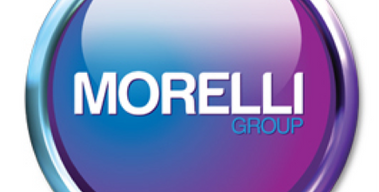0333 222 9943

Bentley Restoration Project Continues
Episode 2
Getting Even: Filling & Sanding
Our Bentley Countryman restoration project has been progressing nicely. The next stage ensured that the bare metal panels were checked for imperfections and any small dings or dents were filled.

The photos are at the bottom of the page also if you would like a longer look.
Our technical team used Evercoat Rage Optex Filler to fill in any imperfections. This product is very easy to work with, it applies smoothly and provides a skim to areas that needed attention. Thankfully, we didn't have to deal with any deep fill as the experts at Wyndon Motors gave us a really nice finish to the metal. The smooth nature of Rage Optex will provide us with an easy-to-sand fill to smooth out the minor imperfections.
 Before any spraying is able to commence, all the panels and bodywork must be cleaned thoroughly with Glasurit Degreasers. Our technicians need to ensure that everything is completely free from any contamination. The panels were firstly cleaned using Glasurit 360-4 metal cleaner. It is important to clean the panels before applying any product to the surface as any silicone or wax can cause big issues in the whole surface area of the panels. This needs to be done right first time, making sure it lasts as a finish for years to come.
Before any spraying is able to commence, all the panels and bodywork must be cleaned thoroughly with Glasurit Degreasers. Our technicians need to ensure that everything is completely free from any contamination. The panels were firstly cleaned using Glasurit 360-4 metal cleaner. It is important to clean the panels before applying any product to the surface as any silicone or wax can cause big issues in the whole surface area of the panels. This needs to be done right first time, making sure it lasts as a finish for years to come.
The next stage is to apply a polyester spray filler. As can be seen from the previous paint job, when working with bare metal, like we are on this vehicle, the panels are not fresh off the shelf in a perfect finish. Slim would have made them by turning them from flat sheets of steel which is a skill he learned as an apprentice and not one that many have today! These days, panels on modern cars are generally welded, bonded, or bolted on. The industry is looking to repair before replace where possible, but if this cannot be done then the removed panel would be recycled and a new one attached. Modern metal can be pulled using dent pulling techniques and finished with light skims of body filler. Old metal was much less workable due to how thick it was and dent pulling was way less sophisticated so dents used to be filled by beating them out and melting lead sticks into the affected area and hammering and filing them to shape. This is a skill not often used today as modern filler has replaced this time consuming and costly business rarely used even in classic car restoration nowadays.
The best way to achieve a great finish is to apply a spray filler which provides a certain amount of build to level things out. Our technicians used Evercoat Optex Superbuild which is also an epoxy product and can be applied directly onto the metal/alloy substrate. As seen in the images below, it goes on pink making the panels all look very different from the original grey paintwork. To achieve the right finish, it is sprayed on using a SATA designated primer spray gun with a 2.0 Fluid Tip - as it is a fairly thick product.

Our technician is wearing a Devilbiss DPROV-650 air fed mask which filters the air and keeps him safe from fumes during the spraying process.
Helpfully, the pink colour of this product acts as a guide coat. When the panels are sanded, they change colour - turning to a lighter grey - any pink areas highlight a spot that may have not been worked, or that has been missed, during the flatting process.
Sanding is a time consuming process but at every stage of the build we are looking to keep on improving the finish - a classic car like this needs the right amount of attention. Our technicians use hand blocks connected to dust extraction to remove the dust whilst they work: they use 120 Grit 3M Blue Net Sheet Roll and finish off with 180 Grit before the next stage of spraying with the Glasurit Two Pack Primer, which we will cover in the next blog.

We have had great feedback from episode one and really want to keep the story going. We have put links in this one to the products and equipment used, primarily to make sure you can look closer at the items if you want to. You need only to click on these if you want more information in general on the products and equipment used.
Thank you for reading this blog and following along the process!



